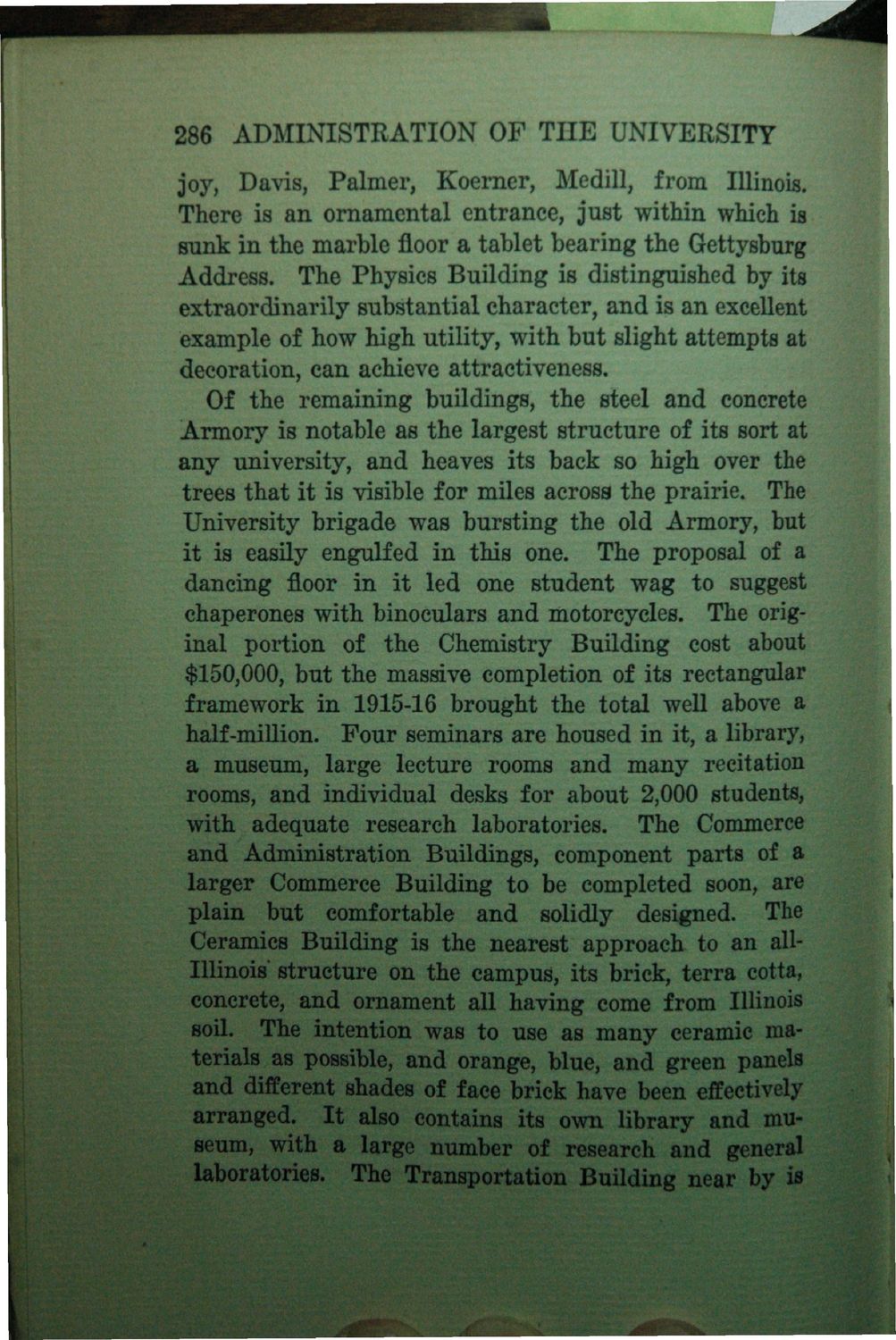| |
| |
Caption: Book - History of the University (Nevins)
This is a reduced-resolution page image for fast online browsing.

EXTRACTED TEXT FROM PAGE:
286 ADMINISTRATION OF THE UNIVERSITY joy, Davis, Palmer, Koerner, Medill, from Illinois. There is an ornamental entrance, just within which is sunk in the marble floor a tablet bearing the Gettysburg Address. The Physics Building is distinguished by its extraordinarily substantial character, and is an excellent example of how high utility, with but slight attempts at decoration, can achieve attractiveness. Of the remaining buildings, the steel and concrete Armory is notable as the largest structure of its sort at any university, and heaves its back so high over the trees that it is visible for miles across the prairie. The University brigade was bursting the old Armory, but it is easily engulfed in this one. The proposal of a dancing floor in it led one student wag to suggest chaperones with binoculars and motorcycles. The original portion of the Chemistry Building cost about $150,000, but the massive completion of its rectangular framework in 1915-16 brought the total well above a half-million. Four seminars are housed in it, a library, a museum, large lecture rooms and many recitation rooms, and individual desks for about 2,000 students, with adequate research laboratories. The Commerce and Administration Buildings, component parts of a larger Commerce Building to be completed soon, are plain but comfortable and solidly designed. The Ceramics Building is the nearest approach to an allIllinois" structure on the campus, its brick, terra cotta, concrete, and ornament all having come from Illinois soil. The intention was to use as many ceramic materials as possible, and orange, blue, and green panels and different shades of face brick have been effectively arranged. It also contains its own library and museum, with a large number of research and general laboratories. The Transportation Building near by is nl WM
| |